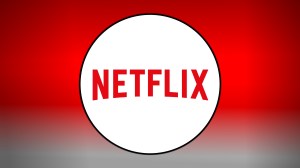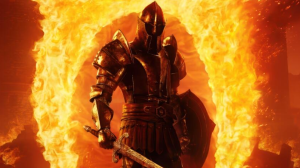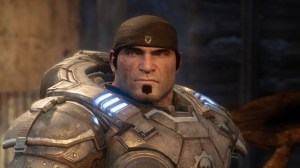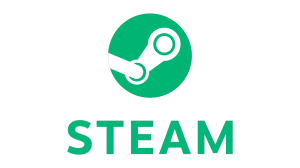In the mid-’90s, Star Wars creator George Lucas embarked on an ambitious project, as he revisited the films that earned him his legacy and made a variety of changes to them. 20 years later, these “Special Edition” versions of the Star Wars trilogy are still highly debated pieces of film history as fans contest the decisions Lucas made with his films.
Videos by ComicBook.com
Throughout the films’ theatrical runs, they were some of the most popular films in history, yet throughout the ’80s and ’90s, they went on to be relegated to TV broadcasts and VHS. After everything the filmmaker had accomplished, Lucas looked back on those original cuts of his films and saw ways he could fully realize his vision thanks to the advancements in special effects techniques.
Many fans may dismiss the Special Edition trilogy, but these updated versions of the film brought along with it many positive changes to the saga.
Check out why we think it’s important to honor the tweaks George Lucas made to the original Star Wars for its Special Edition!
Cultural Relevance
The original films were events that captured the attention of almost the whole world, creating a global sensation whose effects are still felt today. For audiences who grew up in the ’80s and ’90s, the only way to witness the films was on the small scale.
For almost 15 years, the only way to view the films, which were praised for their groundbreaking visual effects, was on a TV set, with many households being lucky to own a 32″ screen. Additionally, the cost of VHS tapes was rather high in the ’80s, forcing many audiences to have to settle for commercial breaks during the films’ broadcasts.
Lucasfilm was so aware of this fact that the first teasers for the Special Edition featured ships flying out of a television set to showcase how much more effective the film is on the big screen.
Additionally, the release of the Special Editions helped reignite interest in the series two years prior to The Phantom Menace landing in theaters, building the anticipation for that film.
Box Office Domination
In 1975, Jaws helped define the concept of a “blockbuster,” a term which was used to describe a film that captured the attention of massive amounts of people, delivering fast-paced adventure and excitement. Two years later, Star Wars solidified the term, going on to become one of the most successful films of all time.
Over the course of its run, the Star Wars Special Edition ended up taking in nearly $140 million domestically, helping it earn the film a domestic grand total of over $460 million.
The film might not have enjoyed its reign as the top-grossing domestic release for too long, as 1997’s Titanic would eventually go on to earn over $600 million domestically, but the Special Editions helped show that audiences were just as interested as ever to head to the theater for a Star Wars film.
Deleted Scenes

In the years since the debut of DVDs, audiences have grown accustomed to seeing a variety of deleted and extended scenes that didn’t make the final cut of a film. Director’s Cuts of films had previously existed, but those were few and far between. Lucas’ incorporation of deleted scenes showed audiences our first glimpses of new footage since the original films’ debut, which helped satiate our anticipation for the upcoming prequels.
One of the deleted scenes that was edited back into the Special Edition of Star Wars featured Luke reuniting with his old friend Biggs, which helped pay off Luke’s complaints earlier in the film about all of his friends leaving home to become pilots. The brief interaction helped remind audiences that Luke never anticipated he’d get thrown into the Rebellion, but merely felt a calling that couldn’t be ignored.
Another deleted scene featured Han interacting with Jabba the Hutt, which was filmed before Jabba was fully conceptualized. The scene establishes the connection between the two characters and, while not pertinent to enjoy Return of the Jedi, the scene serves as an example of how a filmmaker’s ideas for a character can change over the years.
Scope of the Story
When the film was originally created, digital effects were incredibly rudimentary, with Lucas’ work helping pave the way for other filmmakers, effectively revolutionizing cinema. Despite the advanced ’70s techniques, CGI had evolved drastically in 20 years, allowing Lucas to expand the scale of the saga.
A notable change to the Star Wars Special Edition was the establishing shots of Mos Eisley as Obi-Wan and Luke departed on their mission. The updated film showed off a variety of new creatures and vehicles, as well as show off the size of Mos Eisley and the spaceport’s bizarre architecture.
Much of the film features interior locations, whether it be various rooms on the Death Star, cockpits or cantinas, making the film feel somewhat contained, with these new establishing shots helping show off how large this universe was.
Han Shoots Second

One of the rallying cries of the most passionate Star Wars fans is declaring that Han shoots Greedo under the table at the Mos Eisley Cantina, establishing Han as a certified badass. Lucas, on the other hand, looked back and realized it portrays Han as a murderer with violent instincts.
Han shooting first certainly establishes that he’s quick to act when motivated by self-preservation, yet Lucas altered the footage to depict Han as retaliating fire. Years later, Lucas altered the sequence again to show the two characters firing at the same moment, with Han merely dodging the attack.
Last year, Lucasfilm Story Group member Pablo Hidalgo shared his opinions on Twitter about canonical events in the Star Wars saga, with the Han vs. Greedo scene being so highly debated. Hidalgo pointed out that the most important detail about the interchange is that Han and Greedo met, and Greedo got killed.
Similar to how history can be viewed from multiple perspectives based on multiple witnesses to events, the lens to view a Star Wars film or TV show or novel all depends on who is crafting the story. In this case, Lucas felt that the two bounty hunters would have fired at the same time, but only Han survived. Regardless of who fired first, this tweak to the Special Edition has helped change the perception of the saga’s “canon.”
Luke’s Landspeeder
While it’s easy to look back fondly at the original Star Wars and romanticize many of the film’s components, we often overlook that there are distracting shortcomings due to lack of technical solutions.
To convey a speeder that hovered across the terrain with ease, the film took an incredibly lo-fi approach to removing the speeder’s wheels by merely smearing vaseline over the camera’s lens. After knowing this detail, you can’t help but watch that original footage and acknowledge that the scene merely looks like… someone smeared vaseline over the lens.
This poor quality effect doesn’t ruin the movie, but the transparency of cockpits in Snowspeeders in The Empire Strikes Back also help remind audiences that the effects in the film are far from perfect, sometimes to a distracting degree.
Battle of Yavin

Erasing the vaseline from Luke’s speeder was only the beginning of how the original film’s effects could get an upgrade, with the Battle of Yavin elevating to an all-new level thanks to advanced special effects techniques.
The sequence may have only featured a handful of new shots, but the overhaul of the film’s already impressive effects helped solidify these final scenes in the film as some of the most exciting moments in the entire saga, even maintaining their status as some of the best aerial battles ever put to film.
To cap off the sequence, the explosion of the Death Star was amplified, helping create a much larger sense of scale compared to the original, fiery explosion.









